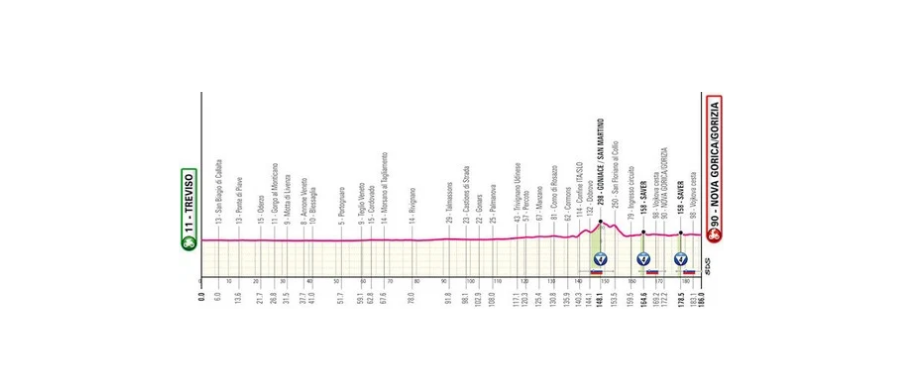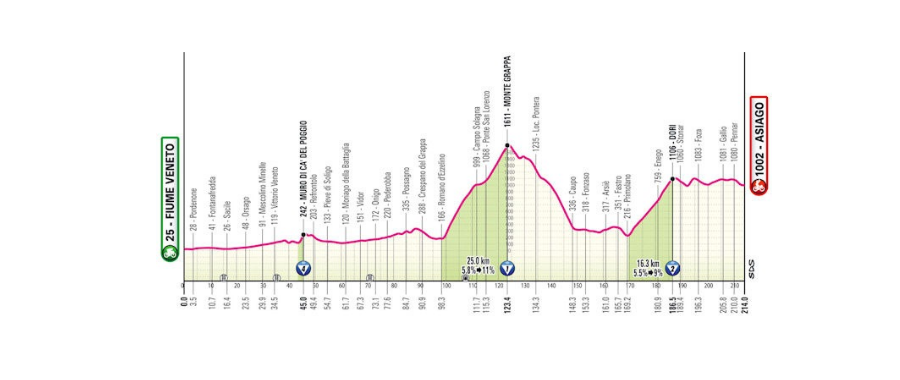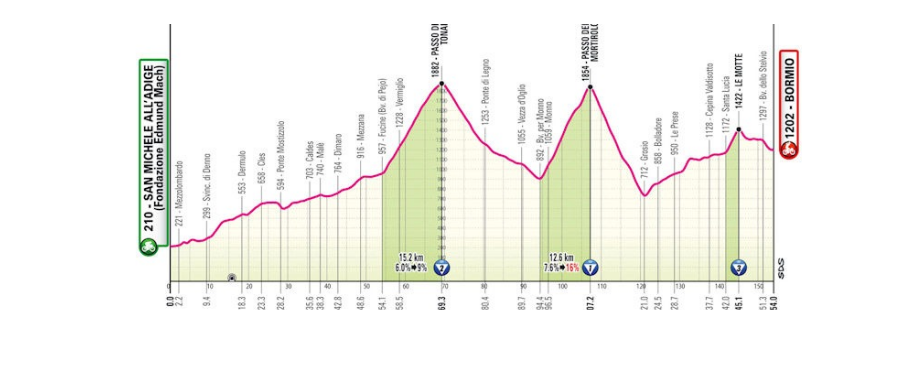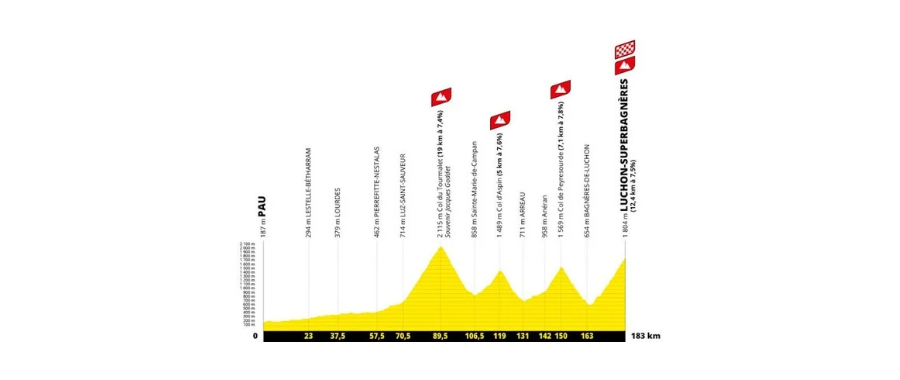The 14th stage of Giro d'Italia 2025 a 180 km long almost entirely flat course between Treviso and Gorizia.
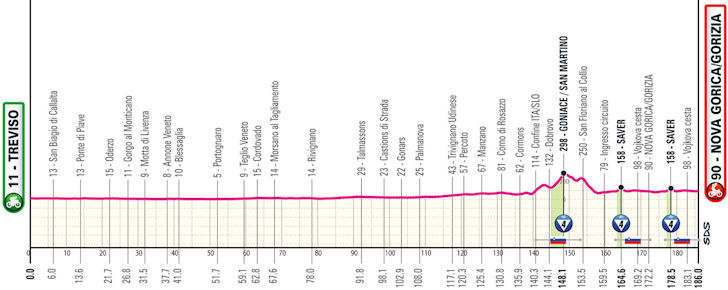
NEXT STAGES
Giro d ‘Italia 2025 Stage 15 Fiume Veneto Asiago (219 km)
The 15th stage of Giro d’Italia 2025 will be held on 25th May 2025. it will be a… Read More »Giro d ‘Italia 2025 Stage 15 Fiume Veneto Asiago (219 km)
Giro d’Italia 2025 Stage 16 Piazzola sul Brenta – Brentonico (203 km)
The 16th stage of Giro d’Italia 2025 will be held after the last rest day, on 26 May… Read More »Giro d’Italia 2025 Stage 16 Piazzola sul Brenta – Brentonico (203 km)
Giro d’Italia 2025 Stage 17 San Michele all’Adige – Bormio (155 km)
Another day in the mountains. Stage 17 of Giro d’Italia 2025 between San Michele all’Adige and Bormio on… Read More »Giro d’Italia 2025 Stage 17 San Michele all’Adige – Bormio (155 km)
Giro d’Italia 2025 Stage 18 Morbegno – Cesano Maderno
18th stage Morbegno – Cesano Maderno 29 May 2025
ON THIS DAY IN THE HISTORY OF GIRO D'ITALIA
FACES FROM THE GIRO D'ITALIA PELOTON - CYCLIST OF THE DAY
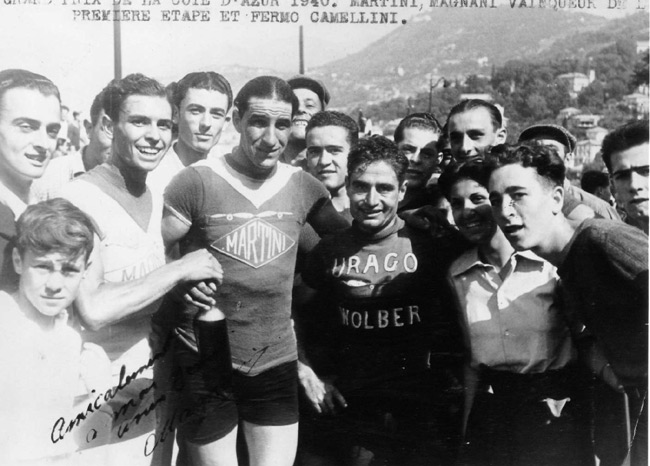
Joseph Magnani (1911-1975) was the first US cyclist to ride Giro 'Italia.
GIRO D'ITALIA FUN FACTS
Although the war in Europe was over since more than one year, certain regional tensions did not cease. On 30 June, during the stage from Rovigo to Trieste, anti-Italian activists in favour of the annexation of Trieste to Yugoslavia blocked the Giro caravan about 2 km east of Pieris, obstructing the road with concrete blocks and targeting the riders with nails and stones.
Read more about the symbolic meaning of Trieste putting in the course of Giro d'Italia>>
ITALIAN PAINTING OF THE DAY
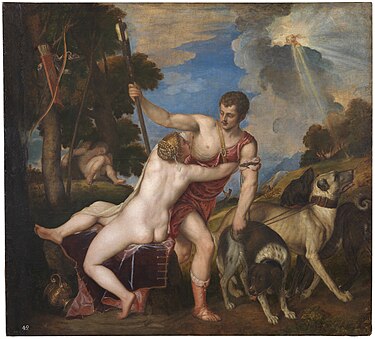
Tiziano’s Venus and Adonis stands as one of the most iconic representations of mythological love and tragedy in Renaissance art. Painted around 1554, this work reflects both the artist’s technical mastery and his deep engagement with classical mythology, human emotion, and the dynamic energy of storytelling on canvas.
The Myth Behind the Painting
The story of Venus and Adonis comes from Ovid’s Metamorphoses. Venus, the goddess of love, falls deeply in love with the mortal Adonis. Despite her warnings, Adonis insists on going hunting and tragically dies after being gored by a wild boar. This tale of passionate love and impending doom captivated Renaissance artists, but Titian’s interpretation broke new ground.
Tiziano’s Unique Composition
Unlike earlier depictions that often showed Venus and Adonis in romantic or peaceful scenes, Tiziano chose to illustrate the moment of departure. Adonis is shown with his back turned, striding forward with his dogs, while Venus, nude and desperate, clings to him in a vain attempt to stop him. Her body is twisted in an unnatural pose, revealing both vulnerability and urgency. The painting captures movement — a frozen instant filled with tension and drama.
This choice of moment reveals Tiziano’s narrative skill. Instead of presenting the tragic climax, he paints the pivotal moment before disaster strikes, letting viewers feel the weight of impending fate.
Color, Light, and Emotion
Tiziano’s use of color, known as “colorito,” was revolutionary. The rich, warm tones of Venus’s skin contrast with the cool blue of the sky and the dark shadows of the forest beyond. The play of light across the figures enhances their three-dimensionality and emotional presence. Venus’s skin glows, emphasizing her divine nature, while Adonis is rendered in earthier tones, grounding him as mortal — and therefore, vulnerable.
The tension between love and destiny is amplified not just by the story, but through Tiziano’s brushwork. The soft, flowing lines of Venus contrast with the determined, angular pose of Adonis. Even the landscape participates in the drama, with trees leaning and clouds gathering, hinting at the turmoil to come.
OTHER CULTURAL/HISTORICAL FUN FACT ABOUT THE REGION
The Venetian Dialect: A Language of History, Culture, and Identity
The Venetian dialect, known as Vèneto or simply Venessian in its native form, is more than just a local way of speaking—it's a reflection of centuries of history, cultural exchange, and regional pride. Spoken primarily in the Veneto region of northeastern Italy, including the iconic city of Venice, Venetian is one of the most distinctive and historically significant dialects in the country.
Venetian is spoken in Venice and across much of the Veneto region, including cities like Verona, Padua, and Treviso. It has some influence from other languages too, like Latin, French, and even a bit of Greek and Arabic due to Venice’s historical trade empire.
The Venetian Dialect: A Language of History, Culture, and Identity
The Venetian dialect, known as Vèneto or simply Venessian in its native form, is more than just a local way of speaking—it's a reflection of centuries of history, cultural exchange, and regional pride.
Spoken primarily in the Veneto region of northeastern Italy, including the iconic city of Venice,
Venetian is one of the most distinctive and historically significant dialects in the country.
A Language, Not Just a Dialect
While often referred to as a "dialect," Venetian is technically a separate language within the Romance language family. It evolved directly from Latin, like Italian, but took its own path. Unlike many dialects that are just regional variants of standard Italian, Venetian has unique grammar rules, vocabulary, and pronunciation. For example, the word for “house” in standard Italian is casa, but in Venetian, it's caxa or cà. The Italian andare (to go) becomes ndar in Venetian.
Historical Roots and Influence
Venetian developed during the time of the powerful Venetian Republic (La Serenissima), which lasted for over a thousand years and built a vast trading empire across the Mediterranean. As a result, the language absorbed words and expressions from Greek, Turkish, Arabic, and French, reflecting Venice’s role as a cultural crossroads.
In fact, during the height of the Republic, Venetian was used as a lingua franca in many coastal cities across the Adriatic Sea, from Istria to parts of modern-day Greece.
Modern Use and Recognition
Today, Venetian is still widely spoken in both urban and rural areas of the Veneto region. It's also heard in parts of Friuli-Venezia Giulia, Trentino, and even outside of Italy in communities of Venetian descent in Brazil, Argentina, and Mexico. In some places, entire communities have preserved the dialect through generations.
Despite its rich heritage, Venetian is not officially recognized as a separate language by the Italian government. However, it enjoys a strong cultural presence through literature, theater, music, and local media. Efforts to preserve and promote the language are ongoing, with increasing interest in teaching Venetian in schools and using it in digital spaces.
TAKE A LOOK AT THE STAGES 14 OF THE OTHER GRAND TOURS
Take a lookat the 14th stage of Tour de France 2025
Take a look at the 14th stage of La Vuelta 2025
